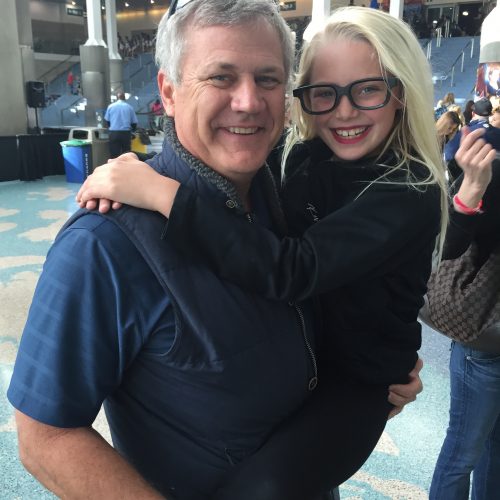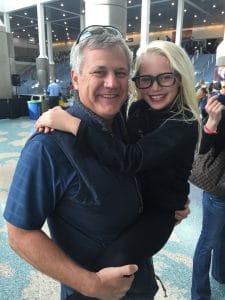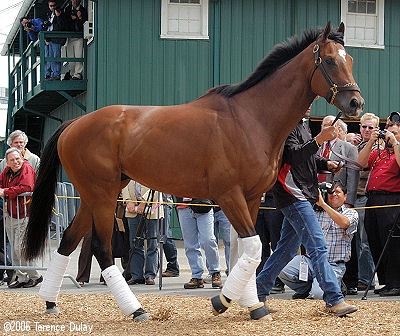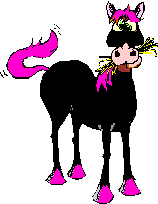Today, March 8, 2017, is International Women’s Day. I thought that it might be appropriate to write a bit about some women veterinarians who have been very influential on my own career in veterinary medicine.
But before I introduce you to five veterinarians of whom, I must confess, I am an unabashed fan, I want to make a couple of things clear.
When I first started my education as a veterinarian – way back in 1979 – women in veterinary medicine, and especially in equine veterinary medicine, were still something of a novelty. There was talk that women didn’t have the stamina to work on horses, that they weren’t strong enough, that they weren’t tough enough… all of which, like many things said about women over the years, were just stupid (it was once felt that women were too “delicate” to participate in sporting activities, but I digress). Now, of course, the veterinary classes are overwhelmingly female, and it’s absolutely clear that the dumb, sexist notions were, well, dumb and sexist. Not that stupidity and sexism don’t still exist… but that’s another story.
The next thing that I want to make clear is that the women veterinarians that I’m going to mention stand out to me for one reason. They are great veterinarians. They are compassionate veterinarians. They have made important contributions to the field of veterinary medicine. They just happen to be women, so I figured that since it’s International Women’s Day, it’s as good a time as any to write about them. They have made the world a better place for veterinarians, and horses, and horse owners. And I am extremely proud to know them, and to have had them influence my career, and only for the good.
So, here’s to:
SUSAN WHITE
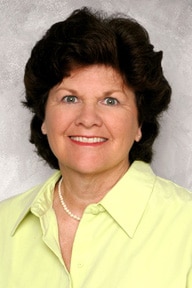 Susan White went to the University of California Davis School of Veterinary Medicine and practiced general large animal medicine in northern California. She then went on to get lots of education in large animal internal medicine and veterinary pathology. She moved to Georgia after all of that school and spent most of the rest of her career at the University of Georgia College of Veterinary Medicine, teaching equine internal medicine to thousands of lucky students (she’s now the Josiah Miegs Distinguished Professor, Emeritus, at the College of Veterinary Medicine, at the University of Georgia). After all of the problems that top performance horses had with the heat in the Barcelona Summer Olympics in 1992, Dr. White and her colleagues did extensive research in the physiology of the elite equine athlete prior to the 1996 summer Olympics held in Atlanta, GA. There are few places hotter and more humid than the southeastern United States in August, but there were exactly ZERO heat related injuries in horses during the Atlanta Olympics. She also developed an interest in equine dermatology, and now goes around speaking nationally and internationally on that topic. Oh, and she’s also educated folks about horse ownership at the USEF, US Pony Club, 4-H, and extension services at UGA and Clemson Universities, the Boy Scouts, and the National Junior Riders in eventing.
Susan White went to the University of California Davis School of Veterinary Medicine and practiced general large animal medicine in northern California. She then went on to get lots of education in large animal internal medicine and veterinary pathology. She moved to Georgia after all of that school and spent most of the rest of her career at the University of Georgia College of Veterinary Medicine, teaching equine internal medicine to thousands of lucky students (she’s now the Josiah Miegs Distinguished Professor, Emeritus, at the College of Veterinary Medicine, at the University of Georgia). After all of the problems that top performance horses had with the heat in the Barcelona Summer Olympics in 1992, Dr. White and her colleagues did extensive research in the physiology of the elite equine athlete prior to the 1996 summer Olympics held in Atlanta, GA. There are few places hotter and more humid than the southeastern United States in August, but there were exactly ZERO heat related injuries in horses during the Atlanta Olympics. She also developed an interest in equine dermatology, and now goes around speaking nationally and internationally on that topic. Oh, and she’s also educated folks about horse ownership at the USEF, US Pony Club, 4-H, and extension services at UGA and Clemson Universities, the Boy Scouts, and the National Junior Riders in eventing.
In 1996, I had the opportunity to go with Susie to an exhibit on China and the Horse, held at the Kentucky Horse Park. We were in Lexington for some American Association of Equine Practitioners’ event, and I pretty much have forgotten everything about that. But the trip to the Horse Park, with Dr. White, who I knew only by reputation at that time…. that was unforgettable. Thanks, Susie, for the inspiration and friendship.
SUE DYSON
 If you don’t know Sue Dyson, you pretty much haven’t been paying attention to the world of equine lameness. Dr. Dyson, MA, VetMB, PhD, DEO, FRCVS (lots of letters usually means very, very smart), is a world-renowned expert in equine orthopedics. Her particular interest is in lameness and poor performance in sports horses. She’s trained and shown advanced level eventers and top show jumpers, too. Her meticulous record keeping and keen powers of observation have helped equine veterinarians gain better understanding of performance problems in horses from across many equestrian. In addition to being a real crackerjack in lameness diagnosis, she’s also an expert in diagnostic imaging, including radiography, ultrasonography, scintigraphy and magnetic resonance imaging. She’s published over 230 papers in scientific journals pertaining to lameness and diagnostic imaging in the horse, and in her spare time, she’s written three text books (of which I am aware).
If you don’t know Sue Dyson, you pretty much haven’t been paying attention to the world of equine lameness. Dr. Dyson, MA, VetMB, PhD, DEO, FRCVS (lots of letters usually means very, very smart), is a world-renowned expert in equine orthopedics. Her particular interest is in lameness and poor performance in sports horses. She’s trained and shown advanced level eventers and top show jumpers, too. Her meticulous record keeping and keen powers of observation have helped equine veterinarians gain better understanding of performance problems in horses from across many equestrian. In addition to being a real crackerjack in lameness diagnosis, she’s also an expert in diagnostic imaging, including radiography, ultrasonography, scintigraphy and magnetic resonance imaging. She’s published over 230 papers in scientific journals pertaining to lameness and diagnostic imaging in the horse, and in her spare time, she’s written three text books (of which I am aware).
Her contributions are simply breathtaking. When Sue talks, equine veterinarians listen. I’m glad to have been able to have been one of them. I’ve heard Sue speak in New Orleans and Nashville (I wrote an article about the Nashville lecture), and at many other places that I don’t remember. I’m proud to know Sue, and lucky to have learned from her.
PAMELA WILKINS
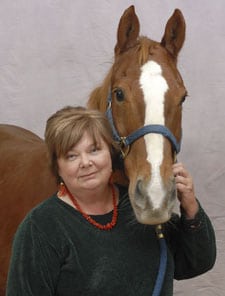 Pam Wilkins has a DVM, a Masters Degree, and a PhD, to boot, all obtained from Cornell University in New York. She spent many years at the University of Pennsylvania’s New Bolton Center, but now she’s a professor in veterinary clinical medicine at the University of Illinois College of Veterinary Medicine. She’s done research that’s been critical in helping sick foals and horses with cardiovascular and respiratory problems, she’s helped veterinarians around the world learn about respiratory diseases and problems of horses, she’s an expert on many equine infectious diseases, and she’s studied lactate metabolism and bacterial blood cultures in foals and adult horses as indicators of disease severity and prognosis.
Pam Wilkins has a DVM, a Masters Degree, and a PhD, to boot, all obtained from Cornell University in New York. She spent many years at the University of Pennsylvania’s New Bolton Center, but now she’s a professor in veterinary clinical medicine at the University of Illinois College of Veterinary Medicine. She’s done research that’s been critical in helping sick foals and horses with cardiovascular and respiratory problems, she’s helped veterinarians around the world learn about respiratory diseases and problems of horses, she’s an expert on many equine infectious diseases, and she’s studied lactate metabolism and bacterial blood cultures in foals and adult horses as indicators of disease severity and prognosis.
Pam was nice enough to review a chapter that I wrote in my Concise Guide to Respiratory Diseases in the Horse, published back in 2004. She didn’t really know me all that well, but she gave me a whole bunch of help and encouragement. My book was better because of her attention – horses everywhere are better off because of it, as well.
SARAH RALSTON
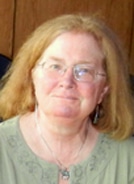 Sarah Ralston is a VMD (that’s what they call graduates of the University of Pennsylvania School of Veterinary Medicine – the rest of us think it’s some sort of dyslexia) and a PhD, and one of the first women experts in equine nutrition. She’s currently a professor in the Department of Animal Sciences at Rutgers’ School of Environmental and Biological Sciences, where she specializes in equine nutrition, but she’s retiring at the end of this school year: maybe she’ll open her own nutritional consulting firm. Her research has focused on the effects of diet on metabolism, behavior, and the development of orthopedic disease in young horses. Oh, and she has additional interests, too, such as nutritional modulation of stress, metabonomics (the study of metabolic responses to drugs, environmental changes, and diseases), and pasture management. She did seminal work in nutrition for geriatric horses and post-surgical colics when she worked at Colorado State University in the 1980s (just after I left).
Sarah Ralston is a VMD (that’s what they call graduates of the University of Pennsylvania School of Veterinary Medicine – the rest of us think it’s some sort of dyslexia) and a PhD, and one of the first women experts in equine nutrition. She’s currently a professor in the Department of Animal Sciences at Rutgers’ School of Environmental and Biological Sciences, where she specializes in equine nutrition, but she’s retiring at the end of this school year: maybe she’ll open her own nutritional consulting firm. Her research has focused on the effects of diet on metabolism, behavior, and the development of orthopedic disease in young horses. Oh, and she has additional interests, too, such as nutritional modulation of stress, metabonomics (the study of metabolic responses to drugs, environmental changes, and diseases), and pasture management. She did seminal work in nutrition for geriatric horses and post-surgical colics when she worked at Colorado State University in the 1980s (just after I left).
The field of equine nutrition is full of opinions as it is of facts, but Sarah’s helped bring a lot of what we currently know to light. She’s been an inspiration, and a good friend. I’ll have an article coming out very soon with an interview that I did with her about horse nutrition, as well.
HILARY CLAYTON
 Hilary Clayton’s is known all over the world for her work in understanding how horse’s move: she’s revolutionized the field of equine biomechanics, and especially as they relate to performance and conditioning. She’s studied bitting, saddle fitting, kinematics, and locomotion, and she’s taught people around the world about the interactions between horse and rider, as well as the mechanics of equine sports. Hilary grew up in England, and recently retired from Michigan State University (she taught in veterinary schools in the UK, the Netherlands, and Canada, too). Her list of honors would make this article almost too long to read. She’s written many, many articles, and her book on Equine Locomotion is a must read for anyone interested in how horses move.
Hilary Clayton’s is known all over the world for her work in understanding how horse’s move: she’s revolutionized the field of equine biomechanics, and especially as they relate to performance and conditioning. She’s studied bitting, saddle fitting, kinematics, and locomotion, and she’s taught people around the world about the interactions between horse and rider, as well as the mechanics of equine sports. Hilary grew up in England, and recently retired from Michigan State University (she taught in veterinary schools in the UK, the Netherlands, and Canada, too). Her list of honors would make this article almost too long to read. She’s written many, many articles, and her book on Equine Locomotion is a must read for anyone interested in how horses move.
I’ve been on a program with Hilary at an American Association of Equine Practitioners meeting, but mostly, I’ve followed her work with admiration, and from it I’ve derived much inspiration. Horses and horse owners have a lot to thank her for.
I could go on and on, thanking the Jill Beeches, and Ginny Reefs, and Wendy Vaalas, and Alicia Bertones, and Rose Nolen-Walstons, and Liz Santshis, and the late Midge Leitch, and Monica Alemans, and the many, many others who have given so much to horses, and have done so much to increase the knowledge of equine veterinarians. International Woman’s Day just happens to be my reminder to say thank you for all you’ve done.
“If I have seen further, it is by standing on the shoulders of giants.” – Sir Isaac Newton

